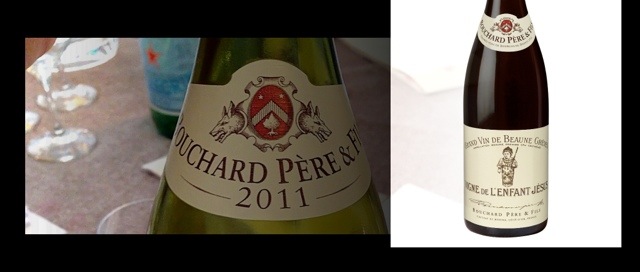Bouchard Pere et Fils and for that matter other of the large houses in Beaune have over the recent years really improved quality. They have moved from mass production towards quality that can rival some of the better producers in the different appelations.

But how big is this improvement? To test this we had a range of Bouchard Pere et Fils, Beaune Greves Vigne l’Enfant Jesus … from 1988 to the latest vintage 2011.
Bouchard Pere et Fils, Beaune Greves Vigne l’Enfant Jesus is one of Bouchards signature wines – it’s not the top wine of the estate … but still a highly profiled wine – thus also a wine where they always have focused on quality.
The wines tasted – link to tasting note:
- Bouchard Pere et Fils, Beaune Greves Vigne l’Enfant Jesus 1988
- Bouchard Pere et Fils, Beaune Greves Vigne l’Enfant Jesus 1999
- Bouchard Pere et Fils, Beaune Greves Vigne l’Enfant Jesus 2007
- Bouchard Pere et Fils, Beaune Greves Vigne l’Enfant Jesus 2009
- Bouchard Pere et Fils, Beaune Greves Vigne l’Enfant Jesus 2010
- Bouchard Pere et Fils, Beaune Greves Vigne l’Enfant Jesus 2011
Vigne l’Enfant Jesus – quality over the last 23 years
The tasting showed a quite remarkable improvement in quality and a change of style … starting with the 2007 vintage but fully expressed in the 2010 and 2011.
The 1988 was somewhat over the hill, and for what it’s worth showed a old school sligtly rustic style. The 1999 is in my view trying a bit too hard … slightly extracted … seems to be somewhat high on the alcohol – and stylewise it’s like many mid 90 Burgundies … where produceres thought that extraction and color was the key to satisfy the palate of certain “legal experts”.
In my view the 2007 represent a change in style, as it seems more focused on transparancy and expression of terroir – it’s still somewhat on the dense side – but a big improvement from the 1999 – especially taking the vintage into account.
The 2009 is somewhat difficult to evaluate … yes it’s dense due to the vintage – but somehow the expression of terroir and the balance of the wine is even better than the 2007 – but the 2009 vintage is a heavy burden for the terroir.
The 2010 and the 2011 are wonderfully transparent wines – with a lovely minerality and balance. The level of purity and refinement is at least a full level up from the 1999 – and moving these wines into another league.
Concluding remarks on Bouchard Quality
In my view the change in style and quality at Bouchard happens around 2007. They invested in a new winery in 2005 – located in Savigny Les Beaune.
After they moved to the new facility there has been a signifcant improvement in quality of the Beaune Greves Vigne l’Enfant Jesus. I have at a earlier stage tasted the 06 vintage of l’Enfant Jesus and didn’t find it as impressive as the 2007 – so in my view improvement in quality is more pronounced from vintage 2007 and onwards.
In 2010 and 2011 the wines really show the results of the work at Bouchard, as the transparancy of the vintages allow us to see the purity in the fruit, the fine expression of terroir and the finely tuned balance between density and refinement.
I think it’s fair to say that the improvement apply to most of the Bouchard reds – and could be even bigger for some of the midrange wines – as focus on qulity always have been higher for the l’Enfant Jesus.

 - A true vin d’émotion – a Burgundy of passion
- A true vin d’émotion – a Burgundy of passion - A truly hedonistic wine – lively and enjoyable
- A truly hedonistic wine – lively and enjoyable - A vivacious wine for pure indulgance
- A vivacious wine for pure indulgance - A potential vin d´émotion - frais et léger
- A potential vin d´émotion - frais et léger